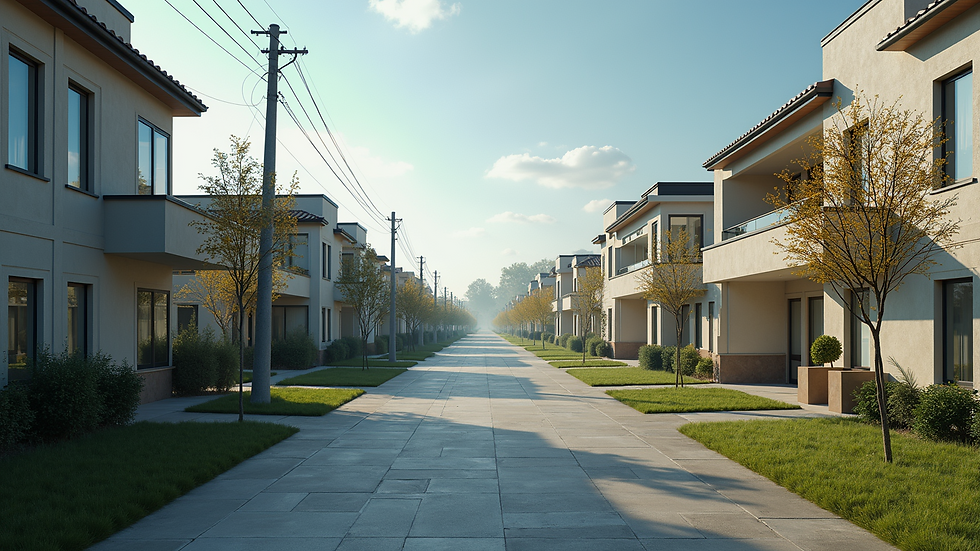The Gender War and the Role of the LGBTQ Community
- James Woods
- Jul 6
- 5 min read
Updated: Jul 7
The dynamics of gentrification in urban settings are complex, intertwined with various social movements, economic factors, and cultural shifts. This blog post will delve into the interplay between the LGBTQ community and gentrification, specifically focusing on its impact on communities of color. By examining this relationship, we will highlight how social differences are created, economic power is wielded, and local progress is monetized within these communities. Additionally, we will consider how these shifts affect the black male experience, providing both historical and societal context.
Understanding Gentrification and Its Impacts
Gentrification is the process of urban transformation where wealthier individuals move into lower-income neighborhoods, often resulting in increased property values and the displacement of original residents. This phenomenon, while contributing to local development, often creates tensions between new and existing community members. In many cases, gentrification leads to the erasure of historical cultural practices and networks, particularly among marginalized groups.
The effects of gentrification can be stark. For instance, in neighborhoods predominantly inhabited by people of color, rising rents can force long-time residents to relocate. According to a study published by the Urban Institute, between 2000 and 2013, gentrification was linked to a loss of over 100,000 affordable housing units in cities like San Francisco and Seattle.

The LGBTQ Community's Role in Gentrification
Historically, the LGBTQ community has played a pivotal role in urban culture. As cities became more accepting, many LGBTQ individuals sought refuge in marginalized neighborhoods, often revitalizing these areas with new businesses, arts, and culture. However, the influx of the LGBTQ community into these neighborhoods has fueled gentrification, often transforming the very fabric of the culture they originally sought.
This phenomenon is particularly notable in cities such as New York and San Francisco, where neighborhoods like the Castro and Chelsea have been centers for LGBTQ culture. As these communities became more desirable, they attracted more affluent residents and investors who may not have the same social ties or historical connection to the area.
Economic Power and Political Influence
One of the critical elements at play in the gender war narrative includes the economic power wielded by the LGBTQ community. Many LGBTQ individuals have achieved significant economic success and influence, particularly in sectors such as technology, media, and fashion. This economic power can impact local political agendas, where the desires of affluent LGBTQ individuals may be prioritized over the needs of long-time residents.
Funding for initiatives that benefit the LGBTQ community may inadvertently contribute to the displacement of residents in color communities. For example, when a new LGBTQ-friendly bar or art gallery opens, it may raise property values and draw in wealthier clientele, further accelerating gentrification.

Monetizing Local Progress
The monetization of local progress within communities of color raises questions about who truly benefits from gentrification. Often, the influx of businesses that cater to new demographics disregards the established culture and needs of existing residents. This disregard can lead to resentment and feelings of alienation among original community members.
Moreover, as new businesses emerge, original residents may find that they are priced out of their own neighborhoods. For instance, restaurants and cafes that cater to a wealthier customer base may replace family-owned establishments that serve traditional cuisines. Such changes can alter the social fabric of the community, leading to the loss of cultural identity.
The concept of "creative placemaking" has emerged as a strategy to address these challenges, promoting community engagement in development processes. However, these efforts often fall short when the overarching economic interests of wealthier demographics dominate the conversation.
The Impact on Black Males in Urban Communities
A critical, yet often overlooked aspect of this dynamic is the impact on black males in communities of color. The intersectionality of race and gender presents unique challenges for black men who face systemic barriers in economic opportunities and social mobility. Gentrification often exacerbates these issues, as neighborhoods that were once considered home become spaces where they feel marginalized.
Moreover, the gender war extends beyond economic disparities and into social relationships within the community. As gentrification progresses, the push for inclusivity in spaces may not adequately address the concerns and voices of black males, who might find themselves at the forefront of displacement.
To better understand these dynamics, we must explore the historic positioning of black men in urban spaces. From the civil rights movement to the present day, the narratives surrounding black masculinity have evolved, shaped by societal perceptions and systemic inequalities.

Addressing the Disconnect
The perceived disconnection between different community groups in gentrifying neighborhoods can lead to resentment, misunderstanding, and ultimately, community fragmentation. Bridging this divide requires intentional efforts to engage all demographics, ensuring that voices are heard, concerns are addressed, and cultural identities are preserved.
Community forums and dialogue sessions can be beneficial in fostering understanding. Policymakers and community leaders should foster an environment where traditionally marginalized narratives are prioritized. By recognizing and validating the concerns of long-time residents, a dialogue can begin between newcomers and existing community members.
Additionally, support for local businesses owned by people of color can help mitigate the economic disparities brought on by gentrification. Promoting cooperative businesses that prioritize community input can also foster a greater sense of ownership among longtime residents and newcomers alike.
This article highlights the need for a nuanced understanding of gentrification and its impacts. Engaging responsibly and meaningfully within urban communities can pave the way for more equitable development, ensuring that progress benefits everyone.
The Path Forward for Communities of Color
As the landscape of urban neighborhoods continues to evolve, it’s crucial for all stakeholders to consider their roles in shaping this change. Communities of color, especially marginalized groups within them, deserve to have their voices amplified in discussions about gentrification and its impacts. The LGBTQ community, with its significant economic influence, has a unique position to champion equitable development that truly reflects the diversity and richness of these neighborhoods.
Policies focused on affordable housing, equitable business development, and cultural preservation can be pathways to ensure sustainable progress. Collaboration among diverse community members is essential for achieving a balanced narrative around gentrification, allowing for a future where everyone can prosper.
The gender war is not merely a struggle among different groups; it is about finding common ground and shared experiences that can transform urban landscapes. Working together, communities can confront the challenges of gentrification in ways that uphold the dignity and history of all residents.
This blog post aims to paint a holistic picture of the interplay among gentrification, the LGBTQ community, and communities of color. The goal is not to assign blame but to shed light on these significant issues and encourage conversations that can lead to positive transformations in urban settings.









Comments